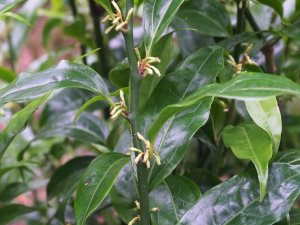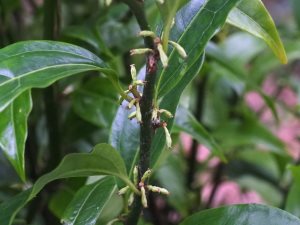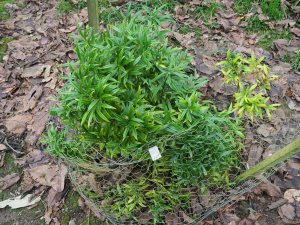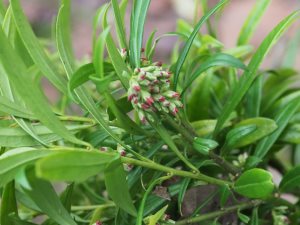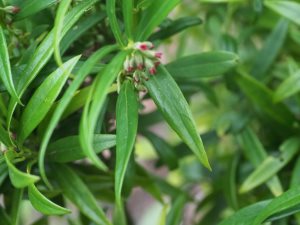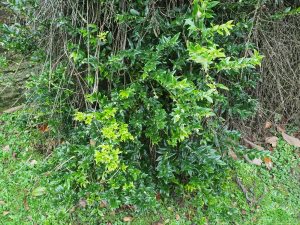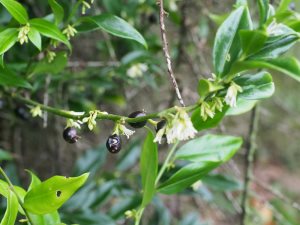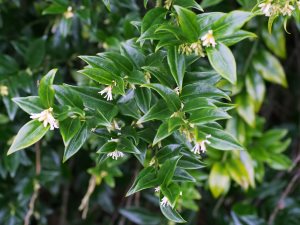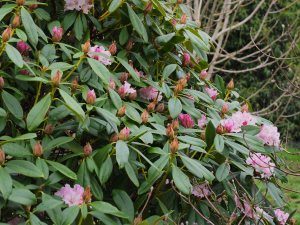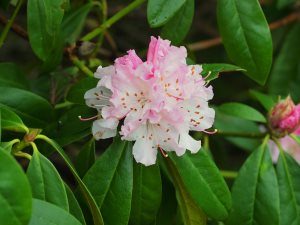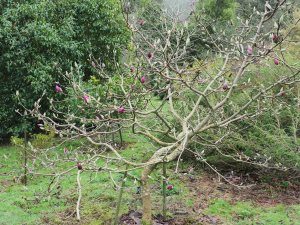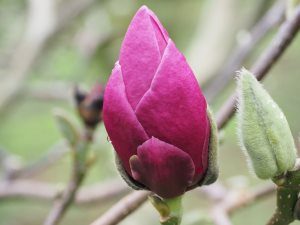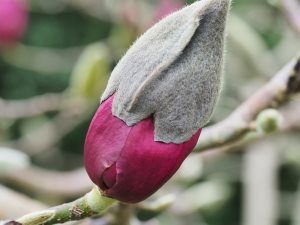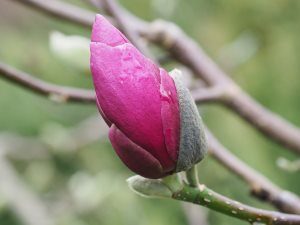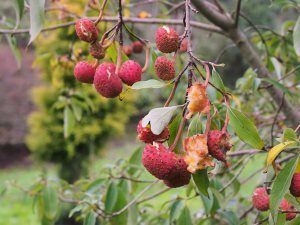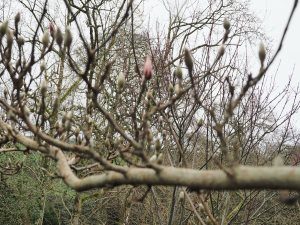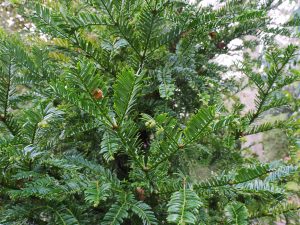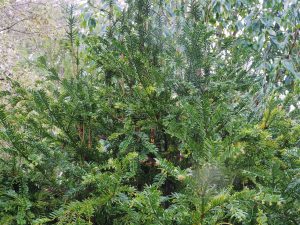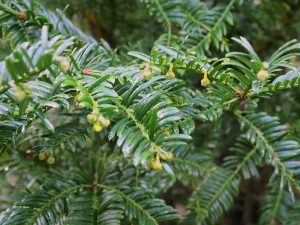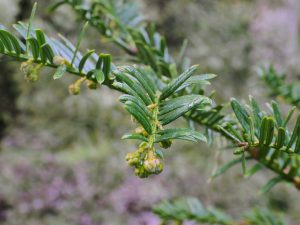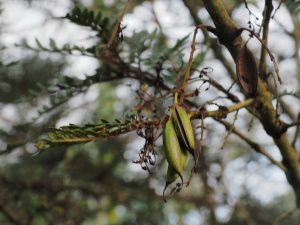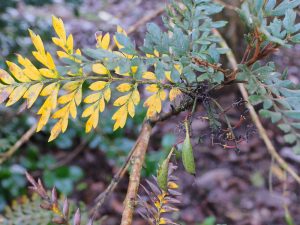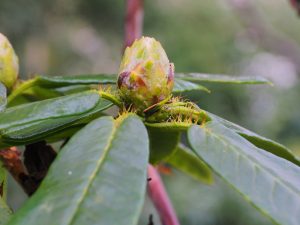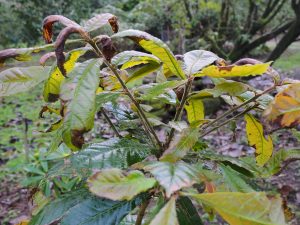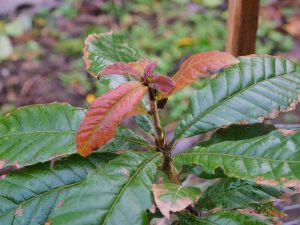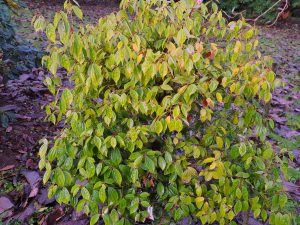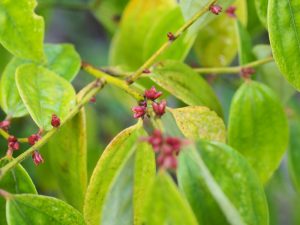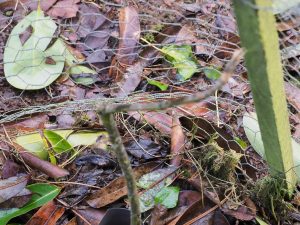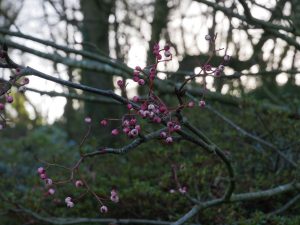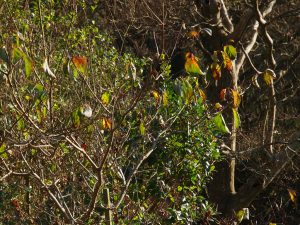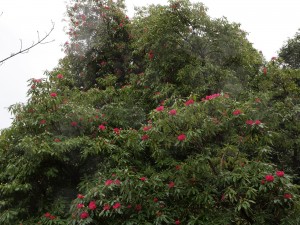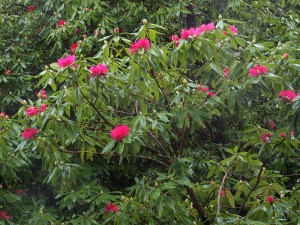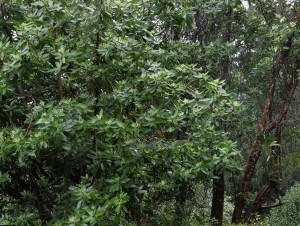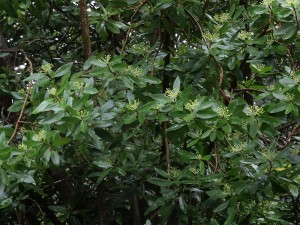Dad died a year ago today.Still quite a good show on the sasanquas at the top of the greenhouse steps. These have been out for eight to ten weeks.
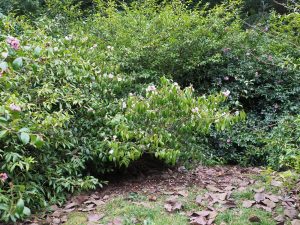
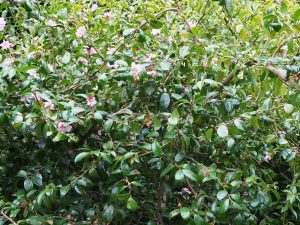
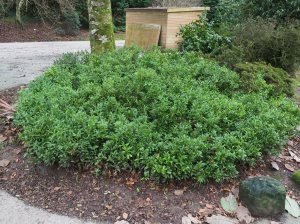
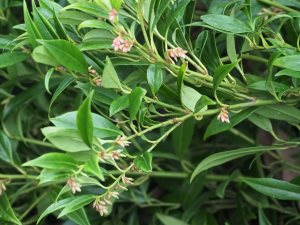
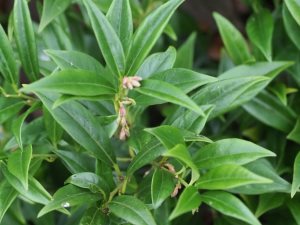
This year Rhododendron ‘Christmas Cheer’ nearly made it out in time. Last year it was very strangely late. I have not noticed the potted plants in the nursery performing yet either.
Exploring around Georges Hut.Cephalotaxus harringtonia is upright but not as upright as Cephalotaxus harringtonia ‘Fastigiata’ which grows by the lawn at Burncoose. This has been here 20 years or so and is 12-14ft. Interestingly the flower buds which are light or olive green are identical to those which we looked at two days ago on Cephalotaxus fortunei. Rather different habit and needle formation here however.
Sorbus ‘Pearly King’ still has many berries intact. Surprising as the small tree has blown over and is readily accessible to pheasants. The other sorbus on the drive have long since shed their berries or had them eaten by birds.
1943 – CW
Double white Camellia, and a good many of the hybrids, Olieifera nearly over. Nearly 100 Lapageria. Hamamelis and Rho mucronulatum very good, moupinense showing colour, several Sutchuenense hybrids coming out and an odd Blood Red. Very mild and a lot of things swelling buds.1941 – CW
Pond half frozen, ice in buckets over 3 inches and turned out shape of a bucket but hollow. Only Hamamelis and a few Cyclamen out.
1931 – JCW
Hamamelis about ½ a crop owing to a wet August a small frost on one night cut out some flowers of several kinds.
1918 – JCW
Very little open, we have a break at last in a long cold spell. Have just cleared up the big batch of stuff in the Old Park planted 12 months ago, it might stand nearly two years now, and not suffer very much.
1916 – JCW
The white C Japonica has a flower or two. R mucronulatum is about its best, Lapageria a few, Coums come on, the first snowdrops just show colour. Jasminum nudiflorum is far the best thing on the countryside. Nobleanum and R venustum nice. Aconites opening.
1902 – JCW
The first primrose and Aconite, Coums at their best, and the first minimus came out and a Camellia Japonica open.
1900 – JCW
The first paper white daff.
1899 – JCW
The first Aconite.




